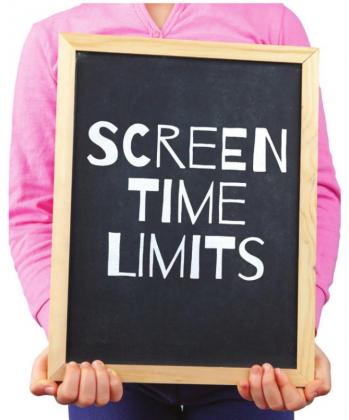YOUTHS IN THE 1950s and 1960s often were criticized for spending too much time in front of a relatively new appliance called the television. That’ll ruin your eyes, make you fat, and turn you into a mindless zombie, so said critics—parents and social observers of the time.
That was then. This is now: TVs have evolved and are no longer alone. Joining the proliferation of electronic screens are those of smartphones, tablets, computers, and gaming consoles. Even more so, youths still are criticized for spending too much time in front of these screens, with many of the same health concerns.
How much is too much? The American Association of Pediatrics suggests children over two years old spend no more than two hours a day before a screen of any device.
“I don’t think any child needs to be at a screen more than two hours a day,” says Erin Wiley, a Licensed Professional Clinical Counselor and owner/therapist of The Willow Center. In her professional opinion, she pares down the AAP recommended time: A child who is ready for the school day can have 30 minutes of screen time before leaving and an hour when returning home. “It’s not healthy to be constantly looking at a screen,” Wiley says.
The health concerns are several:
1. Obesity—Young viewers develop an affection for snacks instead of balanced meals. This is in conjunction with…
2. Lack of physical activity— Watching screens is sedentary and takes away time that might be better spent out in fresh air or otherwise exercising.
3. Irregular sleep—Screen watching not only takes away time from sleep, but also the “blue light” emitted by electronic screens has been found to interfere with the body’s sleep cycle. Lack of proper rest can lead to points 1 and 2.
4. Physical strain—The eyes, back, neck, shoulders, and hands are used in unnaturally repetitive ways.
5. Impaired socializing skills— “To me, this is the biggest drawback, how it affects them socially,” Wiley says. “Youths and teens of this generation don’t do a great amount of talking with adults or have face-to-face conversations anymore. They’re not learning how to interpret people’s responses and their facial expressions.”
The problems are not just with the screens themselves, but with what those screens show, especially in the realm of social media. People post the highlights of their lives, such as vacations, promotions, picnics, parties, day trips, celebrations, weddings, babies. The impression is their lives are perfect, Wiley says. That can lead to viewers’ jealousy and frustration.
So far as the adventure portrayed by videogames, “They are so fast with so many bright lights and interesting things to look at with super-high stimulation, color, and excitement, real life by comparison is boring,” Wiley says.
“The biggest concerns I see are with late-grade-school and junior-high boys who really struggle to stop playing videogames because they’re exciting and fun.” She likens this to an addiction; videogame playing triggers the same area of the brain that releases dopamine in response to sugar, excitement, and mood-altering drugs. The other big concern is with junior-high girls who, unlike boys, respond to fashion and what other females look like and who their friends are dating.
“There are a lot of angry boys whose parents tell them to curb their videogames and a lot of anxious and depressed teen girls who are looking at what they perceive as everyone else’s perfect life. Feeling powerless and hopeless makes you depressed.”
What can be done, especially now that the genie that is the allure of screen watching is out of the bottle? Wiley is blunt: “Parents have to smash the genie back in the bottle. They have to put limits on screen time. Parents should expect a huge emotional backlash, though. There’ll be temper tantrums and screaming and yelling and ‘I hate yous,’ and they’ll kick stuff. They’re like addicts. But parents should stay resolute.”
She adds, “The kids might want to rebel, and they can hate it, but there are certain things that parents must do, like setting boundaries.”
Wiley encourages a family meeting to talk about screen-time limits. Parents should be prepared to give a little, but there should be qualifiers and there must be consequences, she advises. “The family should do their own research, make a plan, have a family meeting, make compromises, and revisit the plan in a few weeks. And give the kids the chance to comment on the parents’ screen time.”
She has a suggestion: “I love the idea of one night being electronics-free. No games, TV, iPad, or phones—except for homework. What would the family do? Board games, walk, play with the pets, paint, play with clay.”
In time, parents should see light at the end of the electronic tunnel. “Once kids drive, they find a whole new world. They get a job, a girlfriend or boyfriend. They get involved with school activities.”
Wiley urges parents to encourage their youths to take part in sports and the arts. “That gets them involved with movement and being around people, with face-to-face time.”
Does Wiley see youths’ overusing screens spiraling out of control, leading to societal disaster? She harkens back to the 1950s. “Back then, adults were horrified that Elvis Presley was going to destroy a generation. He didn’t. At some point, kids get a job, get a car, become adults, have a life and a family, and are not addicted to screens anymore.
“The main message is that we can’t vilify electronics. We use them for a lot of good things. With overconsumption, we have to set guidelines for those who can’t by themselves, to responsibly use social media so people can enjoy it but not be obsessed by it.”
Dennis Bova is a freelance writer and editor.



